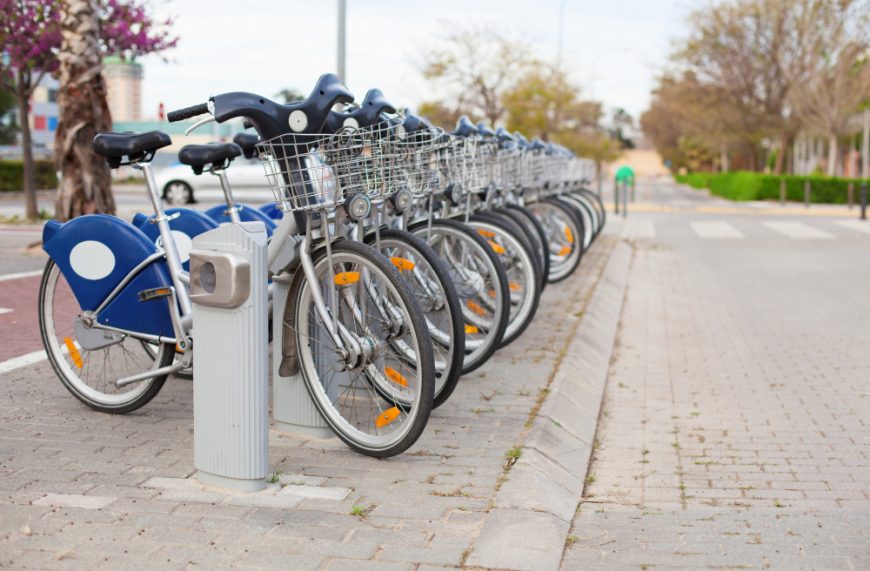Bike-sharing systems have gained popularity in recent years, popping up in places all around the globe. More and more individuals are choosing to take advantage of shared bicycles for their daily commutes or for fun rides around town because of the potential benefits to public health and decreased traffic congestion. Yet, as these services continue to gain in popularity, additional difficulties will arise. The effectiveness of bike-sharing schemes depends on their ability to overcome challenges such as vandalism, theft, and insufficient infrastructure and distribution.
In this post, we’ll have a deeper look at some of the most pressing problems with modern bike-sharing systems and discuss some possible solutions to these problems.
10 Common Bicycle-Sharing Problems

While there are numerous positives to bike-sharing programs, there are also some drawbacks to be aware of. There are a number of factors that communities must take into account before introducing a bicycle-sharing system, such as the difficulties of managing a big fleet of bicycles and the hazards of theft and vandalism. Let’s explore them, shall we?
1. Inadequate Infrastructure
Bike-sharing schemes can’t operate effectively without the right facilities. Bike lanes, racks, and parking stations are all necessities for cities that want to encourage bicycle use. Lacking these, individuals may be less likely to ride bikes. Also, if there aren’t enough bike racks, people will just leave their bikes on the sidewalks, which can be dangerous for pedestrians.
2. Irresponsible User Behavior
The effectiveness of bike-sharing programs is also reliant on the actions of the program’s users. Users are expected to behave responsibly by putting bikes back where they were found and without causing any damage to or stealing from the fleet. Also, users should behave responsibly by obeying traffic regulations and showing consideration for pedestrians and other bikers.
3. Lack Of User Support
Certain bike-sharing services may fall short of providing necessary user support, such as prompt and helpful customer service or knowledgeable technical assistance. Because of this, it may be challenging for riders to report bike faults, get help with their subscription, or resolve other program-related issues.
Learn about bike share programs and how they can help you get around town in an eco-friendly and affordable way
4. Inconsistent Regulations
Bike-sharing initiatives frequently encounter disparate laws from city to city. This might hinder the spread of programs or their ability to function in particular regions. It can also cause confusion among riders who move from one city to another but don’t always take the time to learn the local regulations.
That’s why there are bicycle laws!
5. Distribution Imbalance
Bicycle-sharing systems frequently have the additional challenge of inequitable distribution of bicycles. There could be an excess of bikes in some regions and a dearth of bicycles in others. Dissatisfaction with the scheme is understandable if users have trouble getting their hands on motorcycles when they need them.
6. Payment and Subscription Models
Most bike-sharing systems charge a membership fee and require customers to sign up in advance. Yet, the programs’ payment and subscription mechanisms can be difficult to understand or out of reach for some passengers. Especially those with limited financial resources or no access to traditional banking services.
7. Maintenance and Repair
Keeping the bikes in good working order in a bike share program necessitates regular inspections and repairs. Maintenance entails doing things like changing flat tires, adjusting brakes, and replacing broken components. When bicycles aren’t serviced regularly, they represent a safety hazard for their riders.
8. Harsh Weather Conditions
In some parts of the country, bad weather might limit the utilization of bike-sharing services. Extreme heat or cold may discourage people from utilizing the bikes, and heavy rain or snow may make it dangerous for riders to utilize them
9. Helmet Availability
If you’re a new rider, it’s important to know that many bike-sharing programs don’t offer helmets to their members. Many cyclists choose not to wear helmets. Despite the fact that numerous programs offer them for rent or sale so reduce the likelihood of serious harm in the event of an accident.
10. Vandalism and Theft
One of the biggest problems with bike-sharing schemes is vandalism and theft. Too many bikes are lost or stolen, reducing the number of bikes available under the program. Some people even steal bicycles to resell the pieces separately or use them in illegal activities. Bike-sharing schemes face considerable financial strain due to the frequent need to replace and repair bikes.
Cycling has even created jobs for the future! Read this guide to find out how!
10 Ways To Solve The Bicycles Sharing Problems
The good news is that the most typical issues with bike sharing have multiple solutions. We’ll look at a few of these options and talk about how they may make bike sharing easier for everyone involved.

1. Inadequate Infrastructure
- Work with city leaders and community groups to build more bike infrastructure, such as bike lanes, racks, and parking spots.
- Do surveys of users to find out where infrastructure needs to be improved the most and then set priorities based on the results.
2. Irresponsible User Behavior
- Educate and inform bike users more to encourage safe and responsible use.
- Users who break the rules of the program should have to pay extra fees or have their membership revoked.
3. Lack Of User Support
- Create an in-house customer care department to respond to comments and questions from users.
- Help users who are having problems with the bikes or the application by providing them with technical support and assistance.
4. Inconsistent Regulations
- Provide standardized rules for bike-sharing programs that can be implemented anywhere in the country.
- Collaborate with city authorities to make it easier to secure licenses and authorization for bike-sharing systems.
5. Distribution Imbalance
- Use data analysis to figure out where bikes are most needed and then move bikes there.
- Give users incentives to bring their bikes back to places with few bikes.
6. Maintenance and Repair
- Set up a regular schedule for bike maintenance and repairs to make sure they are always in good shape.
- Use technology to keep track of how bikes are doing and figure out what repairs they need in real-time.
7. Payment and Subscription Models
- Make the service more accessible to low-income and unbanked consumers by allowing them to pay using cash or mobile payments instead of traditional methods like checks or credit cards.
- To attract a wider audience, it’s a good idea to offer a variety of subscription options, such as a pay-per-ride model or a monthly subscription.
8. Harsh Weather Conditions
- Change how many bikes are available and how much they cost when the weather is bad to encourage safe and responsible bike use.
- To protect bikes and riders from bad weather, there should be more bike parking spots with roofs.
9. Helmet Availability
- Riders should be able to borrow or rent helmets at bike stations.
- Work with community groups to give riders helmets for free or at a low cost.
10. Vandalism and Theft
- Add GPS tracking and locks that are hard to break into to make bikes safer.
- Set up community outreach and education programs to stop theft and vandalism.
Are Bike-Sharing Programs Worth It?
As a green and healthful transportation option, bike-sharing programs have been rising in popularity in many cities across the world. However, the value of such programs might vary depending on a variety of circumstances, such as the requirements of individual users and the specific difficulties of the program.
Bike-sharing schemes have several advantages, one of which is the potential they have to alleviate traffic congestion, a major issue in many metropolitan areas. These initiatives help more people ditch their cars in favor of greener modes of transportation by making it simple and inexpensive to get where you need to go. As a result, fewer automobiles will be on the road, which is good for the environment, the noise level, and the safety of people walking or riding bikes.
Bike-sharing systems not only help the planet, but they also have many positive effects on people’s health. Cardiovascular disease, obesity, and diabetes are just some of the many health issues that may be avoided with regular exercise and an active lifestyle; cycling is a terrific method to accomplish these goals. Often available in bike-sharing networks are electric-assist bicycles, which can make it simpler for riders to cover greater distances or more difficult terrain.
Nonetheless, there are obstacles to bike-sharing schemes. Maintaining high standards for bicycle service, especially during high-demand periods, is a significant obstacle. There should be enough bikes for people to use in high-traffic areas, and they should be in good working order.
Dealing with problems like theft, vandalism, and bad user behavior is another obstacle. Systems to deter theft and vandalism of bikes, as well as rules and punishments to address unacceptable user conduct, are essential for successful bike-sharing programs. Programs should also take measures to ensure the safety of their participants, such as making helmets available and promoting safe riding habits.
Conclusion
Finally, the benefits of bike-sharing schemes rely on a number of circumstances, such as the demands of individual riders and the difficulties encountered by the program. Bike-sharing programs might be a terrific choice for customers who want a green and healthy mode of transportation. Yet, for these initiatives to be beneficial to their target audiences, they must overcome obstacles such as a lack of bikes, theft and vandalism, and unsafe or irresponsible riding.
Also Read:
- What Is The Future Of Cycling: Pedaling Towards A Brighter And Exciting Future
- Donkey Republic Might Revolutionize Bike Sharing Everywhere
Should you have any questions or require further clarification on the topic, please feel free to connect with our expert author Luke Ameen by leaving a comment below. We value your engagement and are here to assist you.

